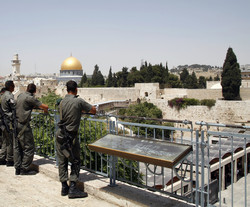New perspectives on Near East conflict
The Ottoman domination of the Near East – specifically in what is today Israel, Lebanon and Palestine – played an important role in fanning the flames of sectarianism. Rather than equality and coexistence, the Ottomans encouraged religious sectarianism and communal autonomy with a divide-and-conquer mentality, helping set the stage for future disharmony and geopolitical struggle. The EU-funded PEACEMED (Mediterranean cities in conflict: Urban wars, inter-ethnic coalitions and the prospects for peaceful coexistence in Lebanon and Israel/Palestine, 1918 to the present) project mapped interethnic relations in these countries and compared urban dynamics to understand how territoriality, nationality and identity have been shaped. This bottom-up analysis examined the Jewish-Palestinian conflict in urban environments such as Jaffa, Israel as well as Christian-Muslim conflict in Beirut, Lebanon. In this way, the project reframed and examined the conflict as a struggle between ethnicities rather than one between nations. It looked closely at how urban space, identity and violence emerged from the ashes of the Ottoman Empire, investigating relations between opposing community-building efforts in war-torn urban settings. Importantly, PEACEMED studied society's popular, sociological and political imagination over time, exploiting historical and ethnographic evidence to examine how different yet interdependent communities define their national identities. It incorporated additional aspects within political sociology and urban anthropology that could help study citizenship, ethnic violence, belonging and identity shaping. This fresh perspective on such a complex issue could help contribute to a deeper and more meaningful solution that takes the different communities and ethnicities much more into consideration.



